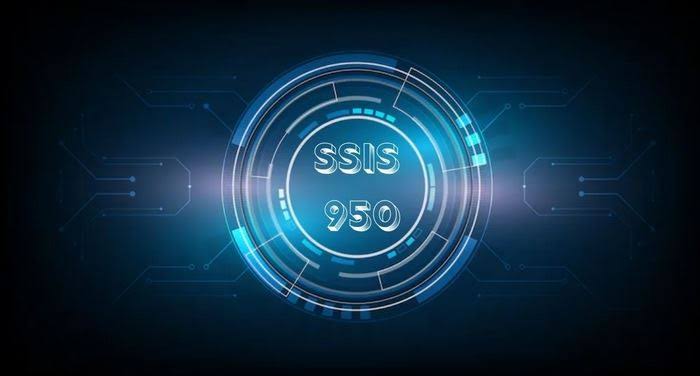Introduction to SSIS-950
In the ever-evolving landscape of data integration and management, SSIS-950 has emerged as a game-changer. Whether you’re a seasoned IT professional or just dipping your toes into the world of data solutions, understanding SSIS 950 can unlock new opportunities for efficiency and innovation in your organization. This powerful tool streamlines processes, enhances data quality, and facilitates seamless workflows across various platforms.
But what exactly is SSIS-950? And how did it come to be such an essential component in modern business operations? Join us as we delve into the history, features, uses, implementation strategies, troubleshooting tips, and future prospects of this remarkable technology. By the end of this guide, you’ll have a comprehensive understanding of SSIS 950 and its potential impact on your projects and initiatives. Let’s dive in!
The History and Evolution of SSIS-950
The journey of SSIS-950 began in the late 1990s, emerging from the need for efficient data integration solutions. Early versions focused primarily on basic ETL (Extract, Transform, Load) processes.
As technology evolved, so did SSIS-950. By incorporating advanced features like real-time data processing and enhanced user interfaces, it quickly became a preferred tool among businesses seeking to streamline their operations.
Throughout the years, updates introduced new functionalities such as cloud integration and support for various data sources. These enhancements made SSIS 950 not just versatile but essential in navigating an increasingly complex digital landscape.
With each iteration, users gained more control over their workflows. This evolution reflects broader trends in business intelligence and analytics that prioritize agility and efficiency.
Today’s version stands at the forefront of modern technology solutions—proving its resilience amidst rapid advancements in data management practices.
Key Features and Advantages of SSIS-950
SSIS-950 stands out with its powerful data integration capabilities. It allows seamless connection to multiple data sources, making it easier for businesses to consolidate information.
One of the remarkable features is its user-friendly interface. Even those without extensive technical knowledge can navigate and utilize the platform effectively. This accessibility promotes wider adoption across teams.
Performance optimization is another advantage. SSIS 950 processes large volumes of data efficiently, minimizing downtime and enhancing workflow productivity.
Moreover, the robust error handling mechanisms provide peace of mind during operations. Users can easily identify issues, ensuring minimal disruption in their processes.
The scalability of SSIS-950 makes it suitable for organizations of all sizes. As business needs grow or change, this technology adapts smoothly without requiring a complete overhaul.
Common Uses of SSIS-950 in Business and Technology
SSIS 950 has become a vital tool in various business and technology sectors. One of its primary uses is data integration, allowing organizations to consolidate information from different sources seamlessly. This capability enhances decision-making processes by providing accurate and timely data.
Additionally, SSIS-950 excels in ETL (Extract, Transform, Load) operations. Businesses can extract valuable insights from large datasets while transforming them into user-friendly formats for analysis.
Another significant application lies in automating repetitive tasks. Companies save time and reduce errors by scheduling regular updates without manual intervention.
Moreover, SSIS-950 aids in data migration projects. Organizations transitioning to new systems can rely on it to move large volumes of data efficiently while ensuring consistency and integrity throughout the process.
Its versatility keeps it relevant across industries—from finance to healthcare—empowering teams with powerful tools for managing their data landscapes effectively.
How to Implement and Use SSIS-950 in Your Organization
Implementing SSIS-950 in your organization begins with understanding your data integration needs. Start by assessing the current workflows and identifying areas where automation can improve efficiency.
Next, set up a dedicated team to manage the installation process. This group should be well-versed in SQL Server technologies and have experience with ETL processes. Training is crucial; consider workshops for users who will interact directly with SSIS-950.
Once installed, begin by developing small-scale projects to familiarize your team with its features. Testing each component ensures that everything functions correctly before scaling up.
Documentation plays an essential role during this phase. Encourage your team to document their experiences, challenges, and solutions as they work through implementations.
Regular reviews of performance metrics will help you refine usage over time, ensuring that SSIS 950 continues to meet evolving organizational needs effectively.
Troubleshooting and Tips for Maximizing the Effectiveness of SSIS-950
When working with SSIS-950, encountering issues is common. Start by checking your data sources and connections. A simple misconfiguration can lead to significant problems.
Next, utilize the built-in logging features within SSIS-950. They provide valuable insights into errors that occur during execution. It’s essential to analyze these logs for quick resolutions.
For performance enhancement, consider optimizing your package design. Break large packages into smaller tasks where possible; this makes debugging easier and improves efficiency.
Additionally, leverage community forums and resources dedicated to SSIS 950. Engaging with others who have faced similar challenges can yield practical solutions you might not have considered.
Don’t overlook regular testing in a development environment before deploying changes in production settings. This practice helps identify potential pitfalls early on, ensuring smoother operations down the line.
Comparing SSIS-950 to Other Similar Technologies
When evaluating SSIS 950, it’s essential to compare it with similar technologies in the data integration landscape. Many organizations consider tools like Apache NiFi and Talend for their capabilities.
SSIS-950 shines in its seamless integration with Microsoft products. This makes it an attractive option for businesses already invested in the Microsoft ecosystem. The user-friendly interface enhances productivity while reducing the learning curve.
On the other hand, Apache NiFi offers robust real-time data flow management, making it ideal for dynamic environments. It excels at handling large volumes of streaming data but may require more technical expertise.
Talend is another contender known for its open-source flexibility and community support. While versatile, some users find SSIS-950 provides a more streamlined experience when working within Windows-based systems.
Each technology has strengths tailored to different business requirements. Understanding these nuances can help organizations make informed decisions about their data strategies.
Future Developments and Potential
The landscape of technology is constantly evolving, and the future developments surrounding SSIS 950 are poised to further enhance its capabilities. As businesses increasingly rely on data-driven decision-making, the demand for robust solutions like SSIS-950 will continue to grow.
Emerging trends such as artificial intelligence and machine learning could be integrated into SSIS-950, enabling it to offer more intelligent analytics and automation features. Enhanced data integration capabilities may also be on the horizon, allowing organizations to connect even more diverse data sources seamlessly.
Furthermore, cloud-based deployments can facilitate greater scalability and flexibility for users. This shift toward cloud computing in business environments opens up possibilities for real-time processing and improved collaboration across teams.
As companies adopt innovative strategies using SSIS 950, we might see a rise in community-driven enhancements that allow users to contribute plugins or modules tailored to their specific needs. This collaborative approach could lead to a richer ecosystem supporting various industries.
With advancements in security protocols also anticipated, users can expect enhanced protection when handling sensitive information within their workflows. Such improvements not only build trust but encourage wider adoption across sectors where compliance is crucial.
SSIS 950 stands at an exciting crossroads with potential growth opportunities waiting just around the corner. Businesses that keep pace with these advancements will likely find themselves better equipped to harness the power of their data effectively while staying ahead of competitors in an increasingly digital marketplace.



